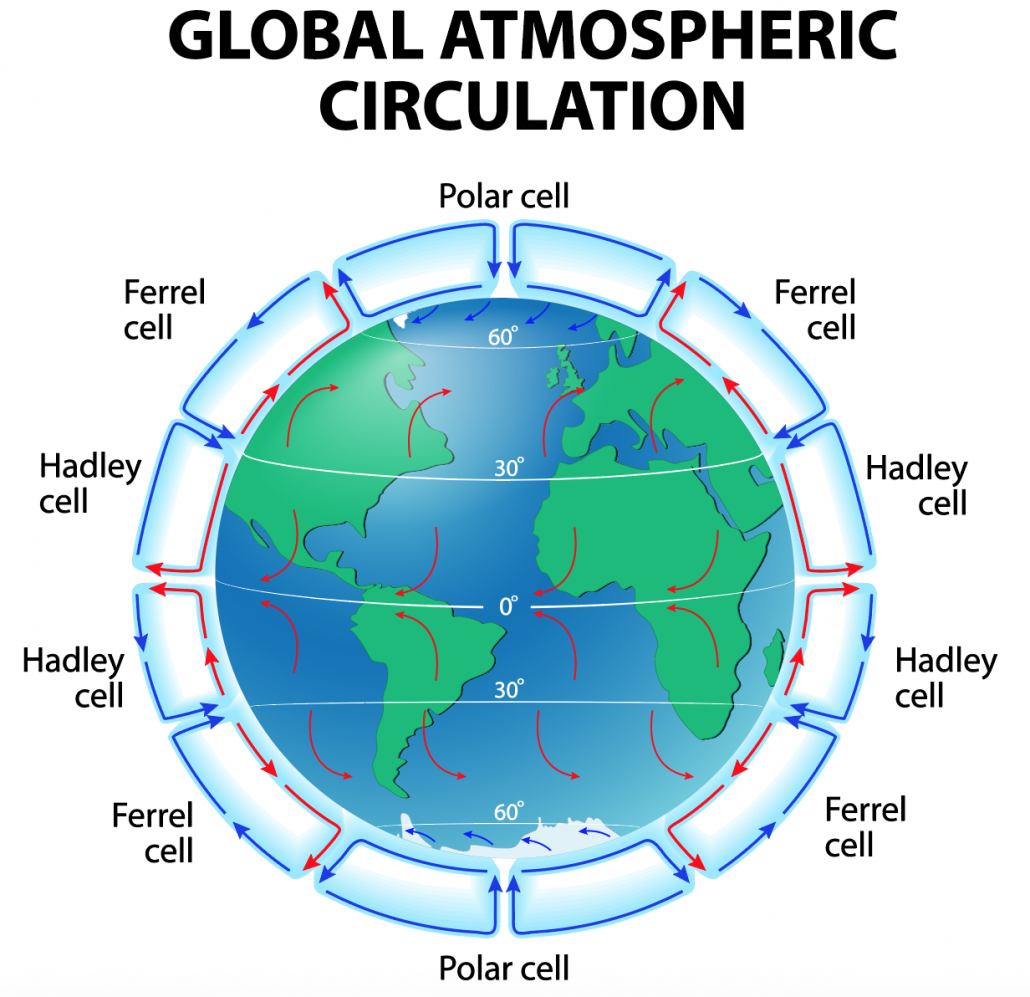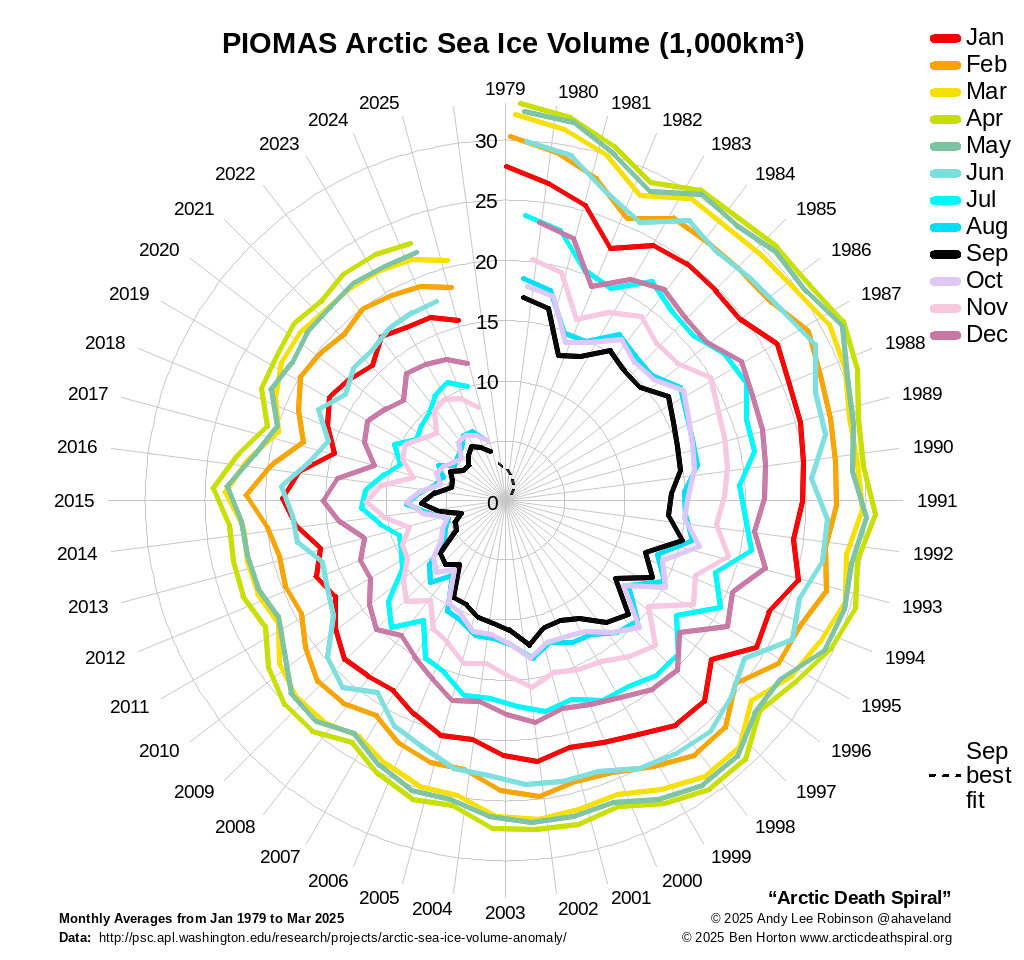A Climate Hypothesis
May. 14th, 2022 10:20 pm I find myself in the rather odd situation of having come up with a detailed and, I think, unique hypothesis about where the current round of climate change is headed. As far as I know it works in terms of physical laws, and the global climate seems to be shifting in the direction I'm anticipating, but as far as I know I don't have any readers who are climatologists and thus can check my work -- and the academic scene isn't exactly enthusiastic about outsiders proposing theories.
I find myself in the rather odd situation of having come up with a detailed and, I think, unique hypothesis about where the current round of climate change is headed. As far as I know it works in terms of physical laws, and the global climate seems to be shifting in the direction I'm anticipating, but as far as I know I don't have any readers who are climatologists and thus can check my work -- and the academic scene isn't exactly enthusiastic about outsiders proposing theories. Here's the hypothesis. Right now the climate of each hemisphere of the earth is dominated by three circulations of air -- cells, in climatological jargon. The whole shebang is driven by the temperature difference between the tropics and the poles. The tropics get all that sunlight pouring straight down from above, so heated air tends to rise along the equator (more exactly, the ITCZ or intertropical convergence zone, but we can be schematic for the moment). That produces the Hadley cells shown on the left: warm air rises to the edge of the stratosphere, flows poleward at high levels, then sinks back down around 30° of latitude. It's bone dry by then, which is why there's a band of desert around the globe near 30° north and south. Then the air gets drawn back toward the equator, sucks up heat and moisture, releases the water as it rises, and the cycle continues.
You get a similar process at the poles, but here it's driven mostly by the intense cold at the poles themselves. That causes air to sink, and sets the polar cells in motion. That's why the arctic and antarctic regions are quite literally deserts -- the air that sinks and then flows out from the poles is bone dry as well as very cold, forming the bleak arctic and antarctic easterlies.
Between them is a third set of cells, the Ferrel cells, which are weak and unstable. Some air that's sucked upwards around 60° nortth and south latitude goes toward the equator rather than back to the poles, some air that comes rushing down around 30° latitude flows toward the poles instead of back to the equator, and the instabilities give the temperate zones the unstable weather we all know so well.
 Got it? Now factor in greenhouse gases. Those, in effect, increase the insulating value of the atmosphere and thus make the transfer of heat from the tropics to the poles more efficient. The increasing heat in the arctic region melts the sea ice: on the right is a useful chart of the decline in ice cover.
Got it? Now factor in greenhouse gases. Those, in effect, increase the insulating value of the atmosphere and thus make the transfer of heat from the tropics to the poles more efficient. The increasing heat in the arctic region melts the sea ice: on the right is a useful chart of the decline in ice cover. Ice reflects sunlight -- in technical language, it has a high albedo. That means that most of the heat that falls on the Arctic Ocean gets bounced straight back into space to warm the cockles of alien species on worlds orbiting the circumpolar stars. Open water has a much lower albedo -- when sunlight falls on it, the water soaks up heat. Water's really good as a heat sink, so it takes a lot of sunlight on open water to warm the sea -- but the Arctic Ocean's got a secret weapon. All summer, the sun stays above the horizon 24 hours a day. So as the ice goes away, the Arctic Ocean warms...
...and once it passes a certain threshold, which I don't have the math skills to calculate, the Arctic Ocean becomes warmer than the land areas immediately around it. That's especially true in winter, when balmy regions such as Siberia and Greenland would be a lot colder than an unfrozen Arctic Ocean.
That, in turn, would cause the collapse of the polar cell. Remember that what keeps those dry frigid easterlies blowing in the arctic is the intense cold of the polar regions. Once the Arctic Ocean is ice free, it's warmer than its surrounding area, and so you don't get cold air dropping down from the upper edge of the troposphere -- you get temperate, moist air sucked into the polar area, where it rises, dumping heat and precipitation as it goes.
The most likely result, based on everything I know about thermal circulation, is that northern edge of the Ferrel cell in the northern hemisphere shifts north so that the rising zone now at 60° north is around the north pole, the northern edge of the Hadley cell in the northern hemisphere moves northwards accordingly to around 45° north...
...and climate belts shift spectacularly. The red line above is 45 degrees north, halfway between the equator and the north pole. If my hypothesis is correct, this will be the new location of the global belt of deserts in the northern hemisphere, because that's where the dry air from the upper troposphere spilling out from the ITCZ will come rushing down, the way it now does over the Sahara desert and similarly verdant regions. Well south of that line, you'll have savanna, and well north of that -- say, in what's now Alaska and Siberia -- you'll have the kind of temperate climate we now get around 45° north.
There are a couple of points worth noting here. First, 10,000 years ago this is pretty much what the climate of the northern hemisphere seems to have looked like. At that time the Sahara was a vast stretch of savanna, watered by annual monsoons off the Indian Ocean and inhabited by elephants, lions, and human beings. Back a hundred millennia or so, in the Eemian period between the last ice age and the one before it, the same seems to have been true also -- at that time there were hippopotami basking on the banks of the Rhine and the Thames. (Their fossils have been found.)
Second, there's some reason to think the collapse of the north polar cell and the northward shift of the Hadley and Ferrel cells may be happening already. Here's an article from Nature talking about the baffling northward shift of the tropical zone; here's an article from Journal of Geophysical Research arguing that a partial collapse of the northern polar cell actually took place in the 1980s. This is just what I found with a fast internet search; I'm sure someone with the necessary background could find much more relating to this suggestion.
Third, the change may not be gradual. The atmosphere, like many complex systems, tends to shift suddenly from one relatively stable condition to another. Paleoclimatic evidence suggests that changes in climate belts and temperature patterns in the prehistoric past took place very quickly in at least some cases -- we're talking here a matter of a few decades at most. Climate is strongly affected by mountain ranges and the distribution of land and sea, of course, which is why there isn't a nice even belt of desert around the world at 30° north and south, but the rapid desertification of the American west and some of the other climate changes currently under way may turn out to be harbingers of future climates for which most people, and most governments, are hopelessly unprepared.
(no subject)
Date: 2022-05-15 03:53 am (UTC)(no subject)
Date: 2022-05-15 04:09 am (UTC)(no subject)
Date: 2022-05-15 04:19 am (UTC)(no subject)
Date: 2022-05-15 03:48 pm (UTC)(no subject)
Date: 2022-05-15 05:12 pm (UTC)(no subject)
Date: 2022-05-15 04:26 am (UTC)What this means is that should the area turn into desert, there would be a period of time during which the Great Lakes would survive as a kind of gigantic oasis. It would last for a time scale which would be historically important, on the order of a few centuries to maybe a couple millennia; I'd need to look at the geography closer to be more precise: the deeper the channels linking the Great Lakes to the ocean, the further they'd drain before getting cut off and the water loss being brought down to evaporation only.
(no subject)
Date: 2022-05-15 03:20 pm (UTC)(no subject)
Date: 2022-05-15 06:24 pm (UTC)https://projects.propublica.org/climate-migration/.
I doubt the models used above on have fully factored in the coming Arctic blue ocean scenario though, and most certainly not the polar circulation collapse. Like the date of peak oil, scientists debate when all the ice disappears. Paul Beckwith is one who expects it fairly soon. He is often ridiculed by his peers but he's been vindicated more and more frequently. He has an excellent blog and YouTube channel where he explains a lot of sciency stuff to the general population. If anyone is interested, I could post a few links on his Arctic ice predictions.
(no subject)
Date: 2022-05-15 12:05 pm (UTC)I can tell you that spring has drastically changed in my half century. We don't have nearly the snow we used to, so the spring usually starts right off with drought. And since the last (very slight) snowfall back in the last week of April there has not been any significant rainfall. Fire danger is at max and every car that goes by on our dirt road creates a major dust storm.
I had always assumed this would be our place to run to when the poop hit the fan. I still think it's our best shot, but I could be wrong.
Rainfall on the St. Lawrence
Date: 2022-06-02 02:00 am (UTC)